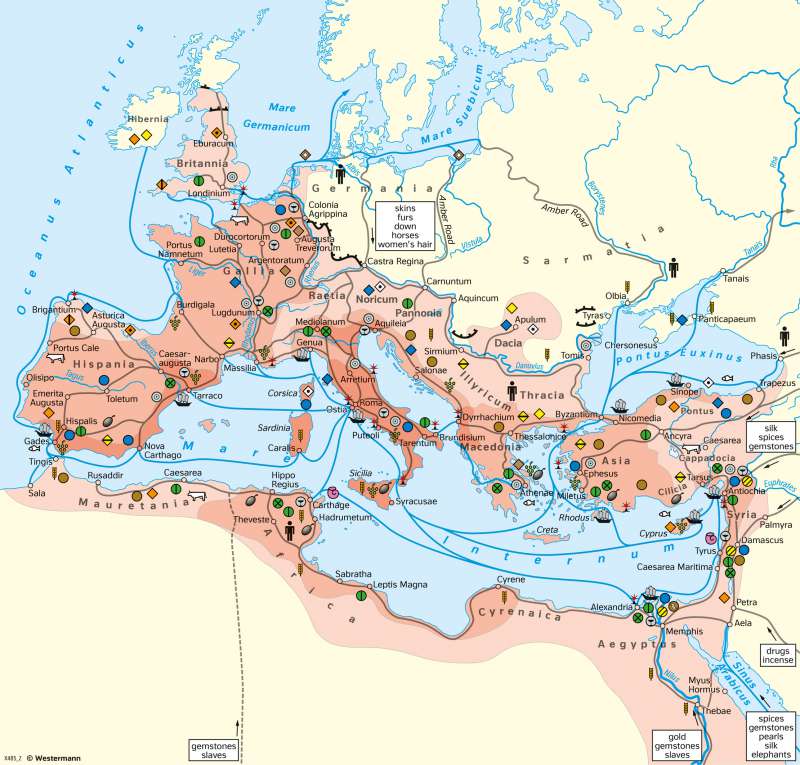Europe - Trade and economy in the Roman Empire
Classical antiquity
978-3-14-100890-6 | Page 57 | Ill. 2

Overview
The Roman Empire reached its greatest extent in 117 AD after a series of great conquests under Emperor Trajan (reigned 98-117 AD). It encompassed the entire Mediterranean region with Asia Minor and the Near East, Egypt, North Africa, the Iberian Peninsula, Gaul, and Britain.
Economic interconnections
From the 2nd century onwards, the integration of states into the empire was increasingly contrasted by economic specialisation of the regions. Gaul, Britain, and Germania supplied not only natural and mining products, but above all industrial products. On the one hand, these provinces were connected to Rome by coastal ships; the Rhône and Rhine valleys served as the main land routes. The province of Hispania, which also supplied food, had a similar position. The most important land connection here was the coastal road via Genoa, Massilia, Narbo and Tarraco.
Regional specifics of trade
The African provinces were intermediaries in trade with Central and West Africa and, in addition to agricultural products, supplied special goods such as the Tyrian purple dye. Via Syria and Egypt, there were trade connections to Nubia, the upper reaches of the Nile, Arabia, and Asia. In ports such as Alexandria and Tyre, special products such as Tyrian purple, papyrus, spices, and cosmetics were traded alongside food.
Greece, Asia Minor, and the Black Sea coastline were important suppliers of raw materials, timber and food, as well as links in trade with Asia. The Black Sea region was also a dominant location for the Roman slave trade, along with North Africa and Egypt. The Balkan Peninsula supplied ores, timber, and food.




